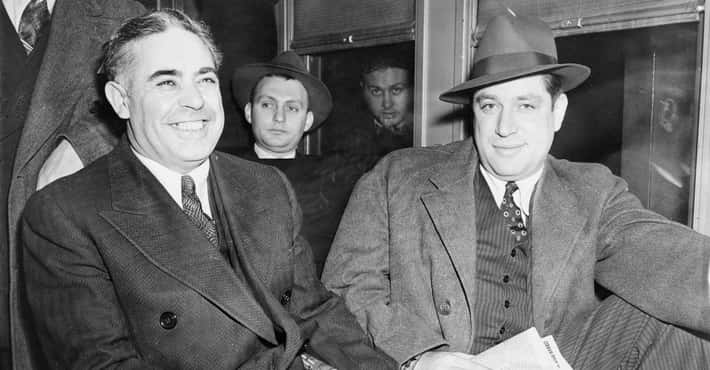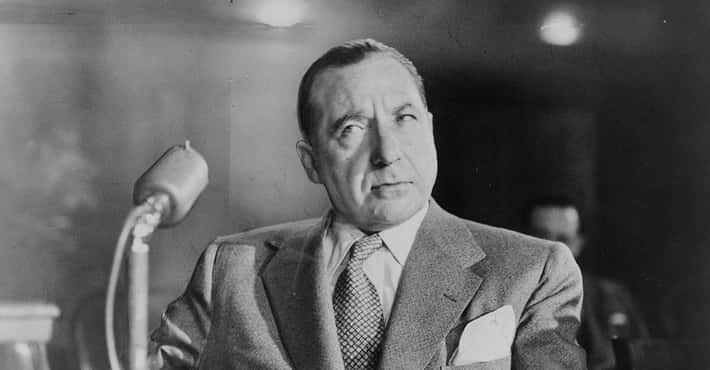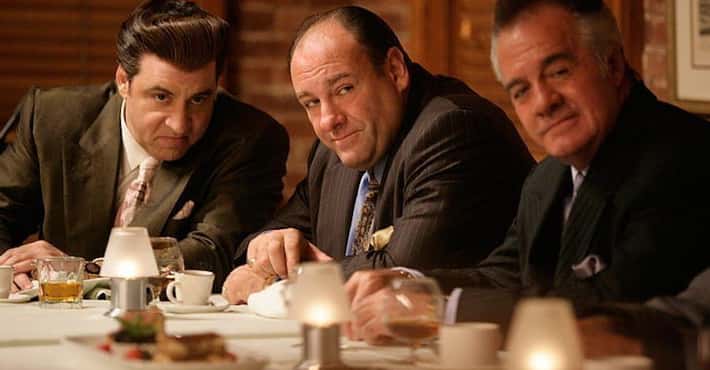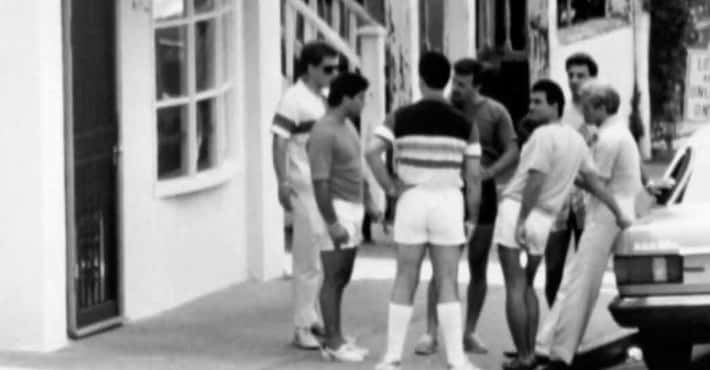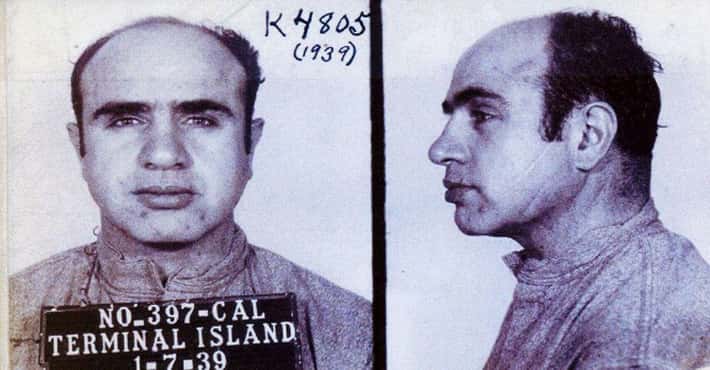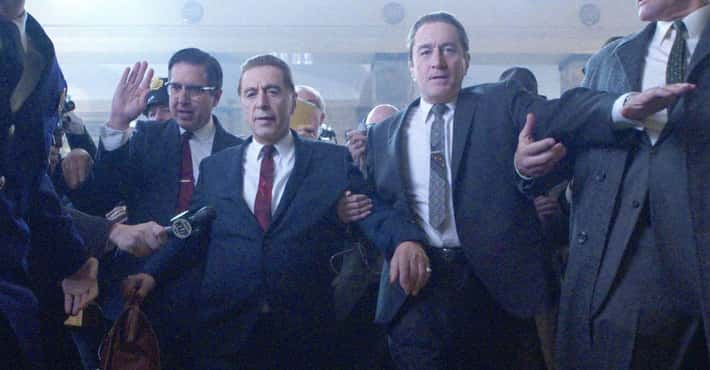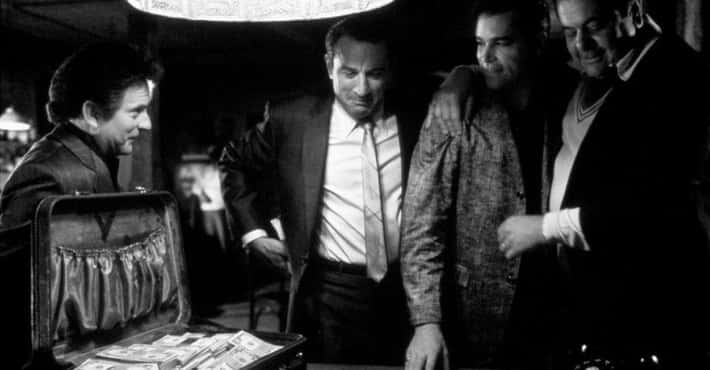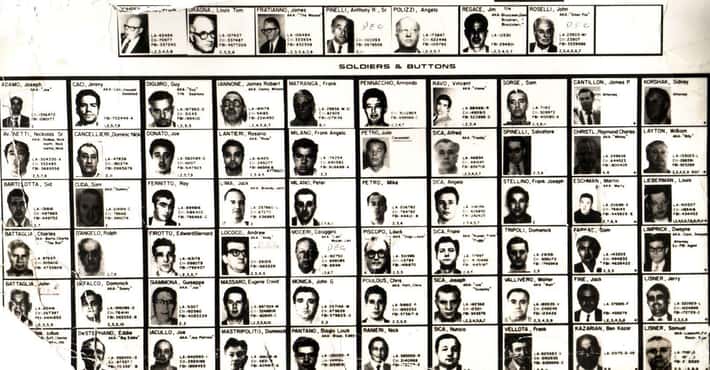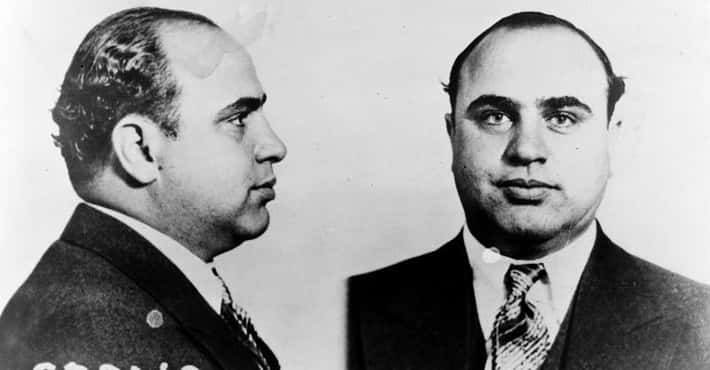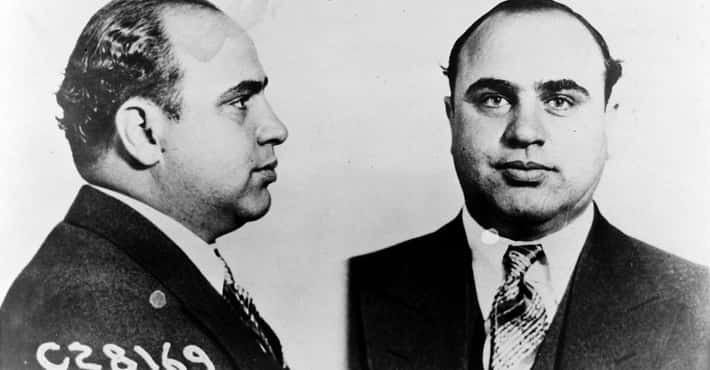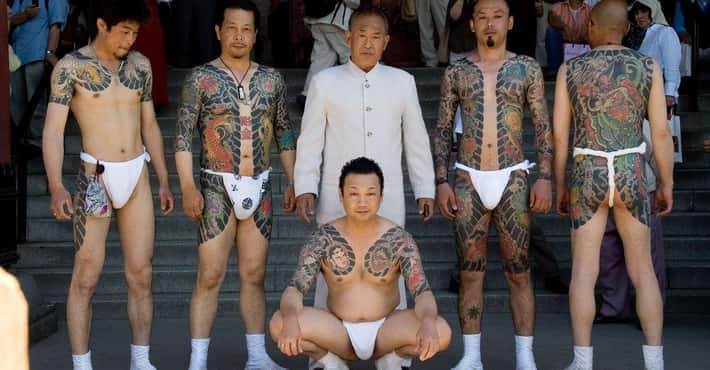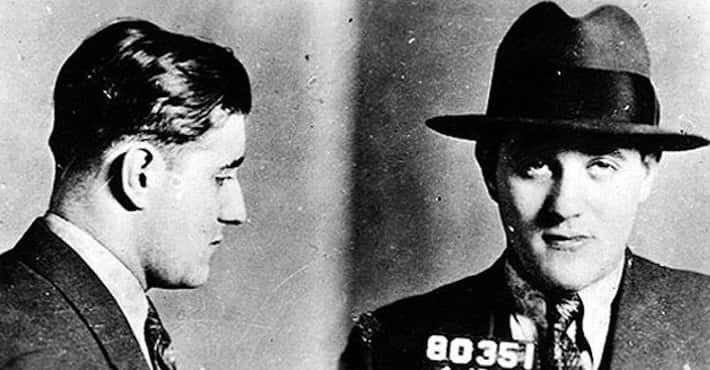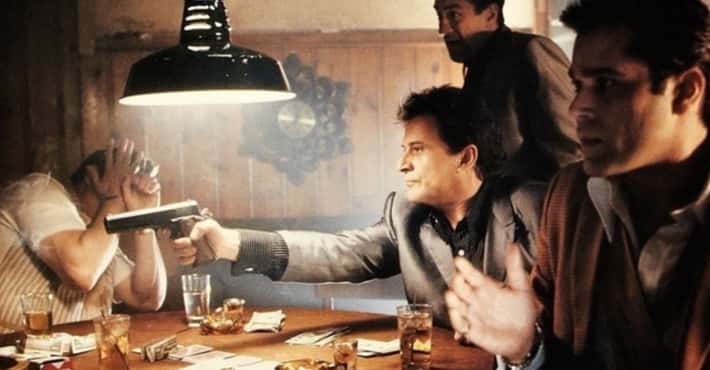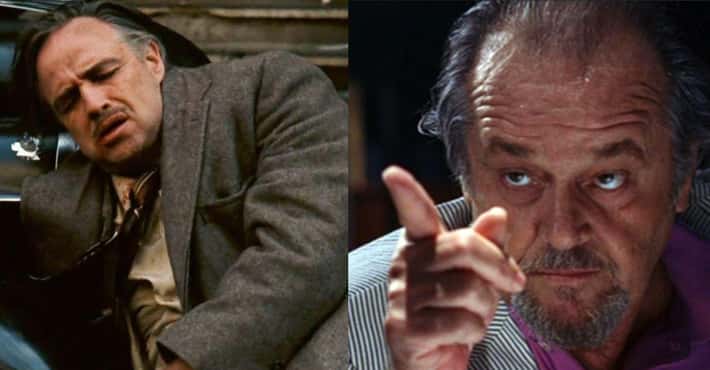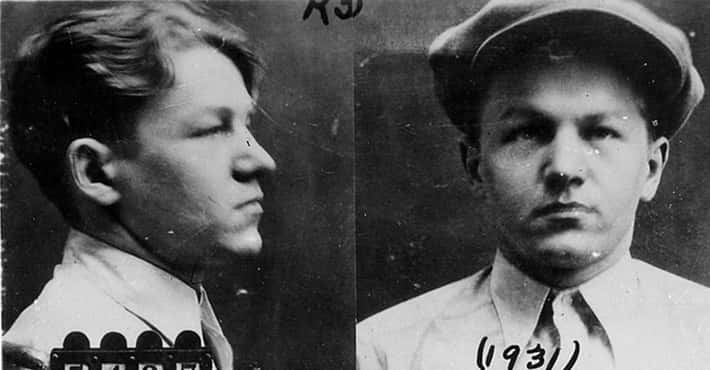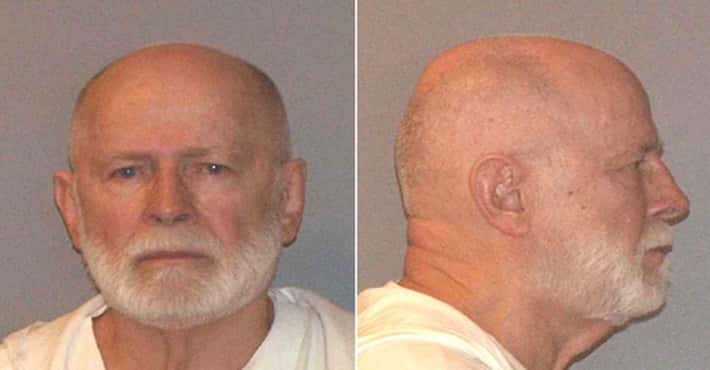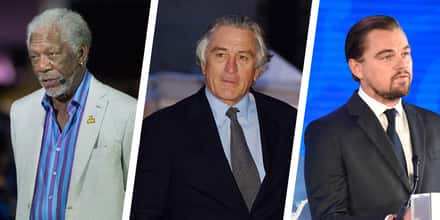
- Photo:
- Chicago Bureau (Federal Bureau of Investigation) - Wide World Photos
- Wikimedia Commons
- Public domain
What Happened To The People Al Capone Knew Best
Copy link
Vote up the people in Al Capone's world with the most compelling fates.
The Chicago Outfit was founded during the 1910s, but it became notorious under the leadership of Al Capone. When crime boss Johnny Torrio invited Capone to Chicago from New York in 1920, it set the foundation for Capone's rise to the top.
Capone, leader of the Outfit from 1925 to 1931, was involved in underground activities long before taking over the group. Even after he went to prison in 1931, Capone may have had some knowledge of what the Outfit was up to. However, his mental deterioration from syphilis was so severe that the former gangster was released from prison early as a result.
Between 1939 and 1947, Al Capone lived out his days in Florida. The void left in the Chicago Outfit by Capone's absence was long ago filled, but when Capone passed away on January 25, 1947, he left behind one son, a wife, a mother, and numerous siblings.
So, what happened to the Chicago Outfit? Who took over? And what happened to Al Capone's son and other family members? We got curious and had to find out for ourselves.
- Photo:
- Unidentified
- Wikimedia Commons
- CC-BY-SA 3.0
1305 VOTESRalph Capone Became A Valued Member Of A Small-Town Community In His Final Years
Alongside Frank and Al, Ralph was the third Capone son involved in organized crime. Older than his brothers, Ralph married in 1915 and had a son, “Little Ralphie,” with his wife, Filomena (Florence), two years later. After Florence deserted the child, he was raised by Ralph's mother, Teresa.
Ralph left New York for Chicago in 1920 (he secured a divorce the following year). He took over the Chicago Outfit's bottling enterprise during Prohibition but was tasked with controlling the market for non-alcoholic beverages. This helped him earn the nickname “Bottles.” Ralph managed to monopolize beverage sales in Chicago during the early 1930s, even functioning as the biggest vendor during the 1933 World's Fair.
When Al was incarcerated, Ralph was in charge of the Chicago Outfit and, much like his brother, Ralph was brought up on tax charges. He was indicted in 1930 and spent time in Leavenworth Penitentiary as a result. After Al's death, Ralph was investigated for tax violations related to property he allegedly owned in Wisconsin in 1951 (at which time his brother, James, appeared on his behalf).
A report from a US Senate Congressional Committee to Investigate Organized Crime in Interstate Commerce (which met in 1950 and 1951) described Ralph as exerting “a considerable amount of political influence” in Lyons, IL.
The extent of Ralph's influence and criminal connections after Al's death isn't clear. He remained wealthy until his death in 1974, having spent the last years of his life in Mercer, WI where he reportedly operated a tavern. As a member of the Mercer community, Ralph was “respected, well-liked… [and] always ready to help his fellow townspeople.”
- Photo:
- Photo:
2298 VOTESTheresa Capone Outlived Al By Five Years
Gabriele and Teresa Capone arrived in the United States from Naples, Italy, during the mid-1890s. Already parents to two boys, the Capones were expecting their third child when they settled in New York City. The Capones expanded their brood, adding a girl and several more boys (including Al) by the time Gabriele died of a heart attack in 1920.
Al went to Chicago soon after his father passed away, but Teresa and the rest of his family (absent James, who'd run away) stayed in New York. Capone reportedly called his mother regularly and did his best to support her from afar. Teresa, for her part, remained devoted to her children and grandchildren, even taking in Ralph's son after the boy was all but abandoned by his parents.
Teresa later moved to Chicago and lived in a house purchased for her by Al. Few details about Teresa's activities are known but she continued to live in that house until she died in 1952.
- 3291 VOTES
Sonny, Al Capone's Son, Worked Various Jobs And Later Changed His Name
Al Capone's only son, Albert Francis “Sonny” Capone, was born on December 4, 1918. Sonny was born before his parents were married, as Al and Mae Coughlin didn't wed until later that same month.
Deidre Marie Capone, Al's grandniece, asserted Mae did not give birth to Sonny but rather took care of the illegitimate child of her husband. Either way, Sonny was Al's son and was likely born with congenital syphilis. This may have been transmitted to his mother by Capone and, in turn, passed to Sonny. As a result, Sonny was sickly as a boy and an ear infection (or surgery to correct an ear issue) left him partially deaf.
Sonny was well cared for but was also bullied as a result of his ailments and his father's vocation. He went on to attend Notre Dame University before returning to Florida to help Mae care for his ailing father.
Once back in Florida, Sonny completed his bachelor's degree at the University of Miami and married Diana Casey. The couple had four daughters: Veronica, Patricia, Barbara, and Teresa. Sonny and Diana later divorced and he married two more times.
Sonny reportedly worked as a used car salesman, ran a restaurant with Mae, and was a printer's apprentice before becoming a tire distributor. There's no indication that Sonny was involved in his father's business, although he was once arrested for shoplifting in 1965. One year later, he reportedly changed his surname to “Brown.”
Sonny Capone died in 2004. When asked about her father in 2021, Diana Capone said he “was incredibly loving. He showed what he had been raised with. He was adored and he passed it on to everybody he came in contact with.”
- Photo:
- EmperorBonaparte
- Wikimedia Commons
- CC-BY-SA 4.0
4218 VOTESJames Vincenzo Capone Reinvented Himself As A Lawman
James (Vincenzo) Capone went to great lengths to set himself apart from his family. As the oldest Capone son, James left home when he was 16 years old and traveled through the American Midwest. He reportedly joined the circus and worked for a “Wild West Show" where he honed his shooting skills.
By some accounts, James joined the military and spent time in France during World War One, but no official records exist documenting his service. He may have used a different name - Richard James Hart - a nod to his hero, actor William S. Hart, and a version of the moniker used later as a government employee.
Richard James “Two-Gun” Hart worked as a federal Prohibition agent during the 1920s. His nickname derived from his acumen with the two guns he kept on him. Hart lived in Homer, NE, before moving with his family to the Dakotas to work as an agent for the Bureau of Indian Affairs in 1926.
Hart continued to work for the Bureau of Indian Affairs tracking down liquor law offenders but, after the repeal of Prohibition, served as marshal in Homer. Accusations of theft and hardship brought on by the Great Depression prompted Hart to reconnect with his family.
Hart asked Ralph Capone for help, a request that was not without consequences. When Ralph was under investigation for tax violations in 1950 and 1951, he asked Hart to testify on his behalf. At that point, Hart's real identity became widely known.
Hart died the following year. Before he passed away, he did see Al on at least one occasion before the latter died in 1947.
- Photo:
- 5181 VOTES
The US Government Repeatedly Tried To Deport Paul Ricca, Another Successor To Capone
Paul Ricca was among the members of the Chicago mob who were indicted in the Hollywood extortion case in 1943. Born Felice De Lucia, Ricca arrived in the United States from his native Italy in 1920 under a false name. Once in the US, Ricca made his way to Chicago where he briefly worked at Bella Napoli Cafe, a popular restaurant frequented by Al Capone This is where his nickname, “The Waiter” came from, although Ricca insisted, “I was a manager not a waiter, but the truth really doesn't matter to you people, does it?”
With time and through fellow associates, Ricca and Capone began to work together. Capone came to trust Ricca and was even Ricca's best man when he got married in 1927. Four years later, when Capone went to prison for tax evasion, Ricca was among the top men running the Outfit. By some accounts, Ricca was actually the one in control, especially while Frank Nitti was also confined.
Ricca became allies with Meyer Lansky, Lucky Luciano, and Frank Costello, key players in the New York contingent of the National Crime Syndicate. This likely helped him until he was sentenced to 10 years in prison on extortion charges in 1943. Ricca was paroled in 1947, however, and he could not return to the Chicago Outfit, as his parole forbade it. Tony Accardo, who had been keeping Ricca informed on Outfit activities, became the nominal leader while Ricca worked behind the scenes.
In 1957, the US government stripped Ricca of his citizenship and attempted to deport him. Ricca stalled, only to be found guilty of tax evasion. Ricca went to prison in 1959, was released in 1961, and continued to fight deportation until 1962. Ricca had attempted to take up residence in another country but none (not even Italy) would have him. From 1962 until he died in 1972, Ricca remained in the US with no other place to go.
- Photo:
- The Jills / Coldwell Banker Real Estate
- Wikimedia Commons
- CC-BY-SA 3.0
6217 VOTESMae Capone Never Slept In The Bedroom She And Al Shared Again After His Death
Mary Josephine Coughlin, called Mae, was from a devout Irish Catholic family and purportedly met her future husband at a party or a club in New York. Two years older than Al, Mae worked as a timekeeper in an office, and the couple had a relatively short courtship. Their paths first crossed in early 1918 and, by the end of the year, they were married.
Mae's family was not in favor of the union but, by most accounts, Mae's pregnancy influenced the timeline of their relationship. Al and Mae married after their son, Albert “Sonny” Francis, was born (unless one is to believe that Sonny was the child of one of Al's mistresses), and struggled financially from the outset. This was, in part, exacerbated by their son's poor health. Additionally, Al's mother, Teresa, and sister, Mafalda, did little to welcome Mae into the family.
Mae was devoted to her husband and her son but had a difficult time with the realities of Al's life in organized crime. Surveillance, notoriety, and the constant presence of Al's business associates and family in their lives put a strain on Mae. As Al's fortunes grew, Mae did benefit from a more extravagant way of life but also tried to keep the truth about Al from Sonny.
When Al went to prison in 1931, Mae was one of the few people allowed to visit (Sonny and Al's mother, Teresa, were the others). After Al was released due to mental decline in 1939, Mae was her husband's caretaker in Florida.
After Al Capone died in 1947, Mae stayed in Florida but was forced to sell the Palm Island home she shared with her husband in 1952. In the years before selling, as Mae's granddaughter Diane Patricia Capone recalled,
When my grandfather died, my grandmother continued living there in the house, but most of the furniture in the living room was covered up with sheets. We never used the living room again. We never ate a meal in the dining room again. She never slept in the master bedroom again.
When Diana asked her grandmother, “Momma Mae, why don’t you ever go into your bedroom anymore?” Mae replied, “I had such happy times there with Papa and he’s not there anymore and I don’t want to go into that room any more.”
Mae relocated to Hollywood, FL, invested in a restaurant with Sonny, and joined forces with Al's sister, Mafalda, to sue CBS, Desilu Productions, and Westinghouse over similarities to Al's life and appearance in The Untouchables TV series. Overall, she lived a modest existence until she died in 1986.
- Photo:
- Photo:
- Unknown (Modern Screen)
- Wikimedia Commons
- Public domain
7214 VOTESCapone's Cousins, The Fischetti Brothers, Were Close With Frank Sinatra
Several of Al Capone's cousins, the Fischetti brothers, were heavily involved in criminal activities in Chicago. According to FBI files, Charles, Rocco, and Joseph, were “well-known underworld characters in the Chicago Area.”
Charles Fischetti was a bodyguard for Al, while Rocco was linked to numerous gambling activities in the Chicago area. All three men were associates of Frank Sinatra, with Rocco and Joseph (the least public-facing of the three) accompanying the crooner to Havana, Cuba, in 1946 - a trip that coincided with a meeting of organized crime leaders. Charles Fischetti was reportedly given a contract on Bugsy Siegel at that meeting.
What happened to Joseph Fischetti remains unclear, but both Charles and Rocco remained involved in crime until close to their respective deaths. Charles Fischetti was called to appear before Congress regarding their investigation into organized crime in 1951, but died before he could testify. Rocco passed away from a heart attack in 1964.
- Photo:
- 8175 VOTES
Frank Nitti, Capone's Successor, Took His Own Life When Faced With Prison Time
Francesco Raffele Nitto, also known as Frank Nitti, was Al Capone's cousin, and took over operations of the Chicago Outfit in 1932. Another New Yorker who went to Chicago, Nitti spent time in Texas before linking up with John Donato Torrio, Al's mentor and predecessor. Nitti built his reputation as an alcohol smuggler before becoming one of Capone's most trusted men.
Nitti made his way through the ranks of the Chicago Outfit and served as head of operations when Capone went to prison in 1929. Upon Capone's release in March 1930, Nitti's station continued to rise and he became known as “Enforcer.”
After both Capone and Nitti went to prison in 1931, the latter's release in 1932 set the stage for him to take over as leader in Capone's stead. Nitti continued to serve as the head of the Chicago Outfit but, in 1943, came under investigation for extortion. Nitti was one of numerous members of the Chicago mob accused of dirty dealings against Hollywood studios and unions.
Fearful he would end up back in prison as a result of impending charges, Nitti left his home on March 19, 1943, and walked to the railroad tracks nearby. According to railroad employees William F. Seebauer, L.M. Barnett, and E.H. Moran, a man walked along the tracks around 3 pm. He appeared to be drunk, and they became concerned for his safety. At that point, recalled Barnett,
I was in the caboose and I heard two shots. Seebauer ducked down inside the caboose and said, “That guy is shooting at us!” Moran, the other switchman, said, “No, he`s trying to kill himself.” Then I pulled the air (brake) and the train stopped.
The three men approached Nitti, who was on the ground. Nitti was still alive. Then,
Suddenly the fellow raised himself to a sitting position, put the gun to his head, and pulled the trigger. There was a shot and the man fell back against the fence.
- 9194 VOTES
Frank Capone Died In A Gunfight With Chicago Police
Al Capone had numerous siblings, many of whom were far removed from his business. For example, little to nothing is known about what happened to his younger brothers Amedeo (who went by Matthew), Umberto (Albert), and Erminio (John or Mimi.) On the other hand, much more is known about Vincenzo (James), Raffaele (Ralph), Salvatore (Frank), and Alphonse (Al), respectively.
Ralph and Frank were two of Al's brothers who were involved in organized crime. Good-looking and intelligent, Frank and Al were close associates of John Torrio, leader of the Five Points Gang. Frank was reportedly violent in his youth and served as a role model in many ways to Al. By the early 1920s, Torrio was in charge of the South Side Gang and Frank became the group's contact person to the Cicero town council.
Frank participated in election manipulation for the 1924 Cicero municipal election and, in the process, took part in an attack on the opposing party's headquarters. Frank and his fellow gang members kidnapped, beat, and even shot several campaign workers. In response, Chicago police increased their pressure on Frank and his men.
Details remain murky but, as Frank crossed the street on April 1, 1924, a swarm of police officers began shooting at Frank, Al, their cousin Charlie Fischetti, and another man, David Hedlin. Frank was shot several times and died of his wounds.
Frank received an elaborate funeral from his fellow underworld associates. Roughly $20,000 worth of flowers alone surrounded his silver-plated coffin, and the event was described as suitable for a “distinguished statesman.”
- Photo:
- CBS Television
- Wikimedia Commons
- Public domain
10160 VOTESAl Capone's Sister Mafalda Never Stopped Fighting For Her Brother's Reputation
Mafalda Capone was the only girl born to Teresa and Gabriele Capone who lived to adulthood. Born in 1912, Mafalda was very close with her brother, Al, and remained supportive of him even after he died in 1947. She also took every opportunity to remind Al's wife, Mae, of her place in the Capone household.
Mafalda was doted on by her brothers and benefited from Al spoiling her. Mafalda married John Maritote on December 14, 1930, although Al did not attend because he thought it was too “dangerous.”
Mafalda, Mae, and Sonny later unsuccessfully sued Desilu Productions, CBS, and sponsor Westinghouse, for their portrayal of Al in The Untouchables (the series that ran from 1959-1963, not the film starring Kevin Costner). They claimed the show was “unjustly enriched” and used Al's “name, likeness, and personality” without permission.
- Photo:









